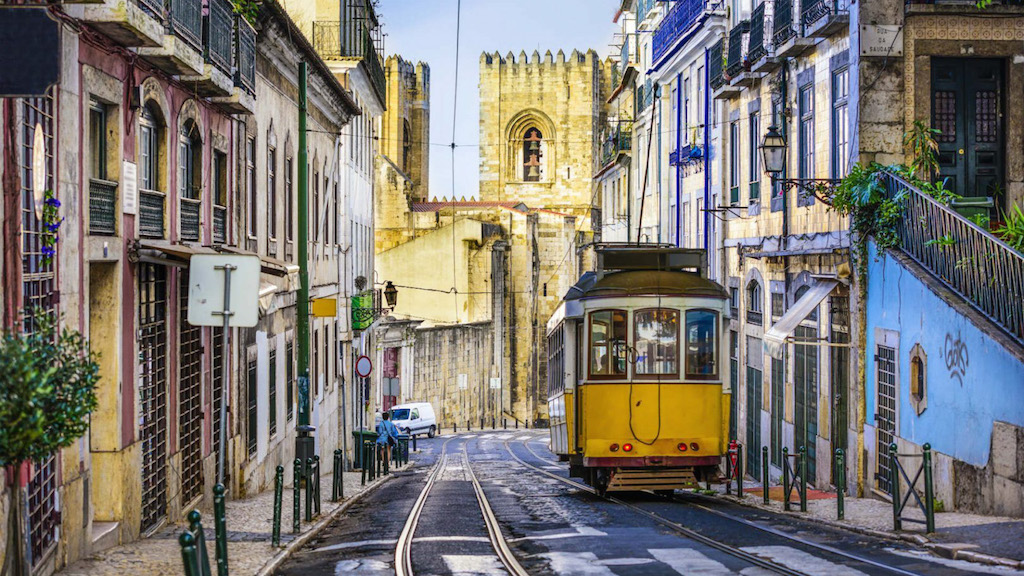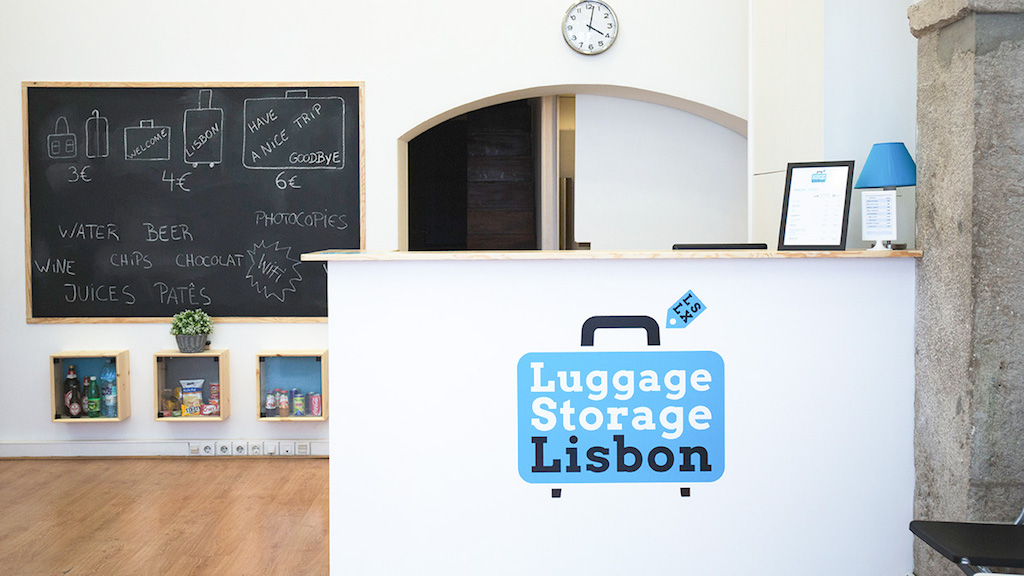Practical tips and useful information for your trip to Lisbon What to know before you arrive!

Usually, before arriving in a new city, you want to learn more about its traditions, history, language or culture. However, sometimes what you really need is simple but essential practical information and tips. What time do restaurants usually serve food? What’s the cheapest way to arrive downtown from the airport? What scams should I look out for? What apps should I download before arriving?
Well, this is where we come in! We compiled a list of info and insider tips that can help travelers land on their feet and enjoy Lisbon without having to spend precious hours figuring out logistics.

Before arriving: useful websites and apps
Carris Metropoltitana
Of course in Lisbon we have local taxis and ride-sharing apps like Uber and Bolt. But if you’re keen on taking advantage of the public transportation system, you should look into Carris Metropolitana, which operates the buses and trams not only in Lisbon’s city per se, but in most of the Great Lisbon area. Most info will be available on Google Maps but for specific routes, schedules and ticket pricing, we’d recommend checking their website directly.
Gira
If you want to ride a bicycle around Lisbon, Gira is becoming a better and better option. The number of bike stations keeps growing, the prices (just 2€ per day) are very appealing, and you now have the option of using normal or electric bicycles (very useful in Lisbon’s many hills). You will need to download the app to use this service, and you can use Paypal to buy your day pass. Uber and Bolt also have bikes (and even scooters), but Gira is the local way to go!
CP
If you plan on taking a train to Évora, Porto or Coimbra, for example, use their website to check timetables and buy your tickets. There are ticket discounts if you buy tickets more than 5 days in advance, or if you travel in a group of 3 or 4 people and on specific week days.
Rede Expressos
A lot of Portugal is not accessible by train. Rede Expressos is the largest coach company in Portugal, and they have a good website, where you can buy your tickets and generally even get better prices than directly at the counter.
Arriving

Taking a taxi in Lisbon is fine, and taxi drivers are generally honest. Airport taxi drivers, however, are a whole other breed. The stories of people taken for a ride (literally) around the city and even across the river are common, as are complaints made to the airport police.
If you want to take a taxi from the airport, a common trick to avoid being scammed is to not take a taxi at the Arrivals exit, but instead to head to the Departures exit, where normal honest taxi drivers will drop off their clients, and hop on a taxi there. This can also apply if you’re calling an Uber and wish to bypass the confusion at the Arrivals terminal, even though this would not be the “official” way to do things.
Besides cars, thankfully, there more options available:
Metro
You might take longer to arrive at your accommodation, but it’s the cheapest option (1.8€), and it’s pretty comfortable.
Bus
Also 1.55€. The 744 and 783 buses are particularly good if you’re staying in the Baixa, Avenida da Liberdade, Marquês de Pombal or Saldanha area. Note that buying a ticket directly inside the bus (or tram) will always be more expensive than if you do so at a designated selling point prior to boarding.
Moving around
Travel Passes
At the airport you can buy a navegante® pré-pago card, which can be charged for you to use in the buses and metro in Lisbon, as well as the suburban train lines and the boats that cross the Tagus river to the south bank. You simply top up the card with money, which will be deducted with each trip – according to these rates.If you plan on using a lot of public transport, as well as visiting famous attractions and Museums, the Lisboa Card might be the thing for you. It costs 22€ for 24h, 37€ for 36h, and 46€ for 72h. Apart from allowing you to travel in any bus, train and metro of the Lisbon Metropolitan area (apart from tourist buses), it gives you free access to many Museums (like the National Tile Museum) and attractions (like the Belém Tower, the Jerónimos Monastery, and many others – 35 in total). It also gives you discounts to other attractions like the Oceanário (15% discount) , Calouste Gulbenkian Museum (20%) or even the ultra famous Pena Palace, in Sintra (10%).
The 28 Tram
The most famous tram line in Lisbon is an attraction in itself, and if you have a Lisboa Card or a Day Pass, it’s free to ride. Remember that it’s a public transport used by locals, so give your seats to the elderly, if needed, and be patient. A good tip to avoid having to queue in long lines (especially in the Summer) is to take the tram not in Martim Moniz, but on the other end of the line, near the Cemitério dos Prazeres, where there are fewer tourists waiting to experience what has been considered “the most beautiful tram line in Europe”. And while you are in this neighborhood, hands down one of our favorite parts of Lisbon, don’t forget to check out the best restaurants in Campo de Ourique.
Gira bicycles
If you want to exercise while you sightsee, it might be a good idea to check out Lisbon’s bike sharing scheme. At 2€ per day, it’s great value, and especially great to explore the riverside.
Money

The most common ATM machines are called Multibanco, and are ubiquitous throughout the city. There are others, marked as ATM or Euronet, but they are generally considered less safe and reliable.
It is worth it to carry money with you, because many cafés, pastelarias, and even some restaurants won’t accept cards. When it comes to cards, Visa is preferred to American Express or others.
Safety

Lisbon is quite safe, but there are a few things you should keep in mind. Beware of pickpockets, especially around the Baixa area, and inside the 28 tram.
Also, beware of young men selling “weed” in Baixa. If you buy from them, you will soon realise that the herb you received will only be useful in seasoning a pasta sauce.
Leaving your luggage

There are a few companies offering luggage space in central Lisbon. City Lockers has lockers in Camões Square, Chiado, Rossio metro station, Praça da Figueira and Martim Moniz, with prices starting from 2€ for an hour.
Luggage Storage Lisbon offers luggage storage in Cais do Sodré, Benfica and Parque das Nações, from 5€ for the first 3 hours.
However, you can always ask your Hotel / Hostel / Airbnb to keep your bags for you, which will generally be free.
Exploring Lisbon

Walking tours are a great way to learn more about Lisbon in a short amount of time, and to find little gems that you might otherwise miss. Taste of Lisboa’s Food and Cultural Walks are a way to discover the cultural and culinary treasures hiding in Lisbon’s streets and alleys.
Miradouros: if there is a thing that Lisboners love is a good sight over the city. And there are some famous places known in Portuguese as miradouros from where you can see the city and its river from a privileged spot. Miradouro da Graça, or Miradouro de São Pedro de Alcântara are some of the most famous, but there are other priceless views, like the one from the very cool and street art filled Panorâmico de Monsanto (at Estrada da Bela Vista), an old panoramic restaurant, now abandoned, and turned into a free street art gallery with an amazing view.
Visiting

Opening Times for museums
Most museums are open between 10AM to 6 or 7PM. And they usually close on Mondays or Tuesdays. Make sure to check before heading out.
There are really interesting museums, but there are also many places that you can explore for free, like the beautiful Casa do Alentejo (where you can also snack on traditional products of this southern region of Portugal, at reasonable prices), the peaceful gardens of the Museu da Cidade – Palácio Pimenta, or the lovely Cinemateca Portuguesa, with its enchanting architecture, its café and bookstore, and its cinema theater, where you can watch a movie for 3.20€ in a charming 19th century building.
Eating

Opening times for restaurants
Restaurants in Lisbon have surprisingly short service hours. If you’re thinking about maybe having a very late lunch, or a very early dinner, think again. In traditional restaurants, lunch is served between 12PM and 3PM. Dinner service is usually between 7PM and 10.30PM. However, Portuguese usually like dining in restaurants after 9PM, so if you’re an early bird and arrive before 8PM, you’ll likely not have any problems in finding a table.
Couvert
The couvert is a very common thing in Portuguese restaurants that seems to confuse and exasperate foreigners. Basically, as soon as you sit down, a waiter might bring you a bread basket, along with some olives, butter, cheese, maybe even some fancier bites. Those are not free. If you eat from the bread basket, you pay for it. If you have olives, you pay for them. If you want to make sure you’re not charged for it, ask the waiter to remove the couvert from the table, it’s absolutely fine, and he won’t be offended. Otherwise, you will only be charged for the items you do eat, not for the entire spread that may serve on your table.
If you want to try out traditional Portuguese dishes on a budget, look out for the lunch menus or day specials in small restaurants and pastelarias. They are usually displayed outside the eaterie, often written by hand on paper towels or on chalkboards, and are short. Many places also offer what they call mini pratos, a smaller portion of a dish, perfect for office workers having their daily meal before going back to work. Always choose the specials; they’re fresher, cheaper, and you’ll be served faster.
Pastelarias are also great places for a quick bite at any time of the day. Apart from the pastries on display, there’s a lot more that they can serve, but there’s usually no printed menu or board with items or prices that you can consult. But they’ll usually serve sandwiches, toasties, and even soup throughout the day.
If you are a fish lover with a healthy appetite, you might have a great meal waiting for you on the other side of the river. Setúbal, where you can arrive with the Fertagus train (also included in the Lisboa Card), is famous for its fried cuttlefish and its rodízio de peixe, where you sit down and be served as much fish as you can eat, for a fixed price (usually between 13-16€, including side dishes, one drink, dessert and coffee. Cheaper on weekdays!). The waiters come to your table with a platter of different grilled fish, you choose what you want… rinse and repeat until you tap out. Bombordo or Restaurante Clube Naval Setubalense are some of the most famous of these restaurants.
Sleeping

There’s plenty of accommodation in Lisbon, from budget to high-end. However, central is not always better, since it tends to be a bit more touristy, and lacks a “local” feel. And, after all, Lisbon isn’t that big. As long as you’re near a metro station, you’ll be able to move around very easily.
Interesting neighborhoods (beyond Baixa and Alfama)
Graça (for the views), Arroios (for the multicultural vibe), Alcântara (near the river and convenient to walk or cycle to Baixa), Campo de Ourique and Estrela (charming, and accessible via the 28 tram), Alvalade and Roma (upmarket, convenient due to the Metro, plenty of local businesses and traditional restaurants and pastelarias).
Getting out of Lisbon

Portugal is small, so day trips from Lisbon can take you to interesting places, without leaving you exhausted. Here are some options:
– Day trips to Sintra and Cascais (train lines are included in the Lisboa Card).
– Beach days at Carcavelos and Guincho (where you can take a surf class for around 25€)
– Day trip to Évora (direct train from Lisbon, takes around 1.30h)
– Day trip to Setúbal (transport is included in the Lisboa Card)
From before arrival to the time you leave, from apps, to bites, and to amazing sights, we hope that this short guide will help you dive straight in and enjoy the best that Lisbon has to offer!
If you can think of further tips that should be included here, please don’t forget to share them with us via Facebook, Instagram or Twitter and tag us @tasteoflisboa or #tasteoflisboa.
Feed your curiosity on Portuguese food culture:
When is the best time to visit Lisbon?
Apps for you to travel in Lisbon like a Pro
Our 5 favorite spots in Lisbon for stunning sunsets
10 ways to feel like a local in Lisbon
Real people, real food. Come with us to where the locals go.
Signup for our natively curated food & cultural experiences.
Follow us for more at Instagram, Twitter e Youtube
